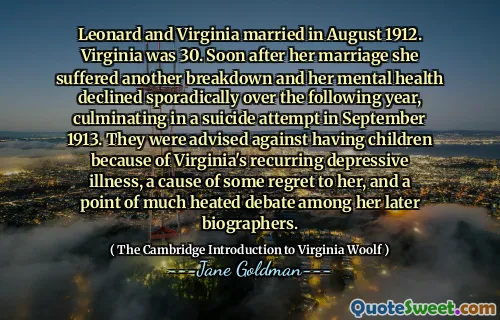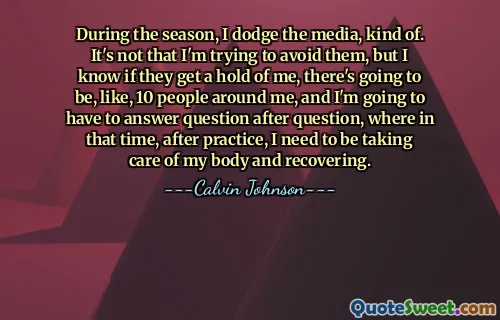
Leonard and Virginia married in August 1912. Virginia was 30. Soon after her marriage she suffered another breakdown and her mental health declined sporadically over the following year, culminating in a suicide attempt in September 1913. They were advised against having children because of Virginia's recurring depressive illness, a cause of some regret to her, and a point of much heated debate among her later biographers.
This passage from Jane Goldman's The Cambridge Introduction to Virginia Woolf offers a poignant glimpse into the early struggles in the marriage of Leonard and Virginia Woolf, framing the challenges Virginia faced due to her mental health. Her frequent bouts of illness, culminating in a suicide attempt, demonstrate both the intimate human vulnerabilities behind Woolf's public persona and the ongoing impact of mental health on her life choices and relationships. The recommendation against having children because of Virginia's declines underscores the societal and medical attitudes towards mental illness in the early 20th century, as well as the heavy personal costs and regrets that arose from such advice. The fact that these matters have sparked much debate among biographers also signals the complexity and nuance needed to understand Woolf's legacy beyond her literary achievements. We get a sense of a delicate balance between creativity and fragility, with mental health being both a private struggle and a defining factor in Woolf's life narrative. This context enriches our understanding of her work and the emotional intensity she conveyed, highlighting how personal hardship frequently intertwines with artistic expression. Ultimately, it is a reminder of the importance of empathy and comprehensive perspective when exploring the lives of historical figures, especially those whose contributions shape cultural and literary history.






